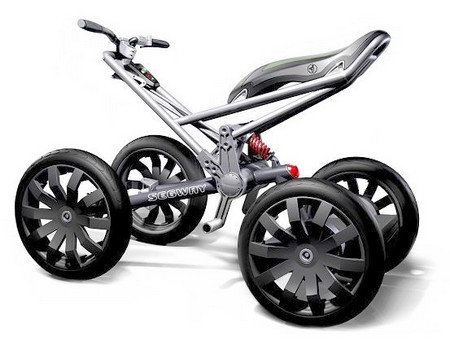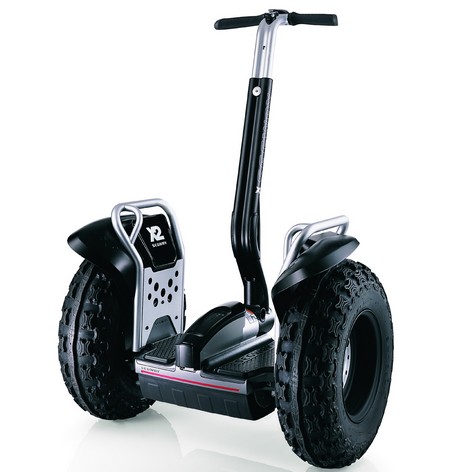History of the Segway
Invented by Dean Kamen, the Segway Human Transporter (HT) electric vehicle has a two-wheeled, self-balancing design. Popular Science honored the Segway HT as one of the world’s most outstanding breakthroughs with an award in Best of What’s New Award in a general technology category. Its name, an Italian homophone of “segues,” means literally to move smoothly and unhesitatingly from one state, condition, situation or element to another.
Dean Kamen’s Early Innovations
Dean Kamen, the inventor of the technology that the Segway utilizes, holds more than 440 U.S. and foreign patents. He developed a medical device, the first wearable infusion pump for chemotherapy, neonatology and endocrinology, as an undergraduate in college. In 1976 Kamen became an entrepreneur by founding his first company: AutoSyringe, Inc. Kamen sold the company in 1982 and founded DEKA Research & Development Corporation to conduct research and development on his innovative products for major corporate clients.

Breakthrough Inventions-The IBOT and the Segway HT
The Segway stemmed from Kamen’s earlier balancing technology from the IBOT Mobility system he developed in 1990. The IBOT idea developed after Kamen became upset while watching a man try to get his wheelchair over the curb of a sidewalk. The solution he developed at DEKA, a six-wheeled motorized wheelchair, enabled the handicapped to climb stairs. It additionally lifted them to eye level.
In the mid 1990s, DEKA started developing the Segway Personal Transporter. Development on the HT took approximately $100 million. Commercial backers for it included Credit Suisse First Boston and Silicon Valley venture capital firm Kleiner Perkins Caufield & Byers. According to Vanity Fair, Kleiner Perkins’ partner John Doerr believed the Segway Company could potentially reach $1 billion in sales.
DEKA used the balancing technology used on the IBOT to create the device. The HT used microprocessors and solid-state gyroscopes to balance itself. The driver used handlebars while driving upright on the platform. Conventional friction brakes wouldn’t work on the device because it needed its wheels to balance its weight. When the HT stopped moving, the braking process energy transferred back into the batteries.
The Segway design didn’t take up much space. It provided extreme maneuverability and would work on pedestrian sidewalks and pathways. In addition, the device delivered zero emissions. Established in New Hampshire in 2000, Segway LLC developed and manufactured the HT. A separate venture from DEKA, it employed 130 workers.
Introducing the Segway to Consumers
Introduced to the public in December 2001, the first official Segway Human Transporter (HT) received a lot of attention as celebrities used it for the first time on national TV. The hit sitcom Frasier even featured it on an episode.
Legislation was passed on Feb. 15, 2002, that allowed Segways to operate on sidewalks. Within a year 30 other states passed laws that allowed the Segway HT to operate on sidewalks. On Nov. 18, 2002, the Segway HT was sold to the public for the first time on Amazon.com. The Segways sold for $3000.

The Segway didn’t sell as well to the public as backers hoped it would (only 50,000 sold by March 2009). Safety issues due to a software problem caused recalls in 2006, also. The Segway is still used in some theme parks by visitors and employees.
Special police forces trained to protect the public used The Segway during the 2008 Summer Olympics. As of May 2007 Segway had more than 250 retail points in 60 countries, and as of October 2008 over 1000 police and security agencies use Segway HTs in their patrolling operations.
